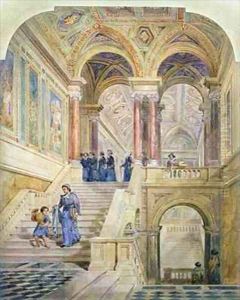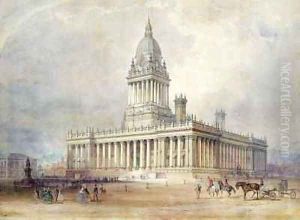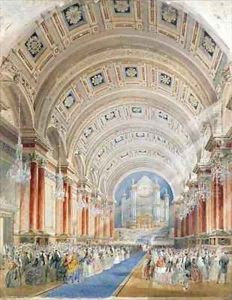Cuthbert Brodrick Paintings
Cuthbert Brodrick was a British architect who is most notably remembered for his significant contribution to the architecture of the city of Leeds, in West Yorkshire, England. Born on December 1, 1821, in Hull, Brodrick was educated at Hull Grammar School. His architectural career began when he was apprenticed to Henry Francis Lockwood, a prominent architect in Hull. Brodrick then moved to London where he worked for a short time with Sir Charles Barry, the architect known for his work on the Houses of Parliament.
Brodrick's most influential period came after he won a competition in 1852 to design the Leeds Town Hall, which is considered one of his masterpieces. The Town Hall was completed in 1858 and remains a landmark of Victorian architecture to this day. Its grandeur and classical style reflect the ambition of Leeds during the Industrial Revolution, as the city sought to establish itself as an important urban center.
Apart from the Leeds Town Hall, Brodrick designed several other significant buildings in Leeds, including the Corn Exchange and the Mechanics' Institute (now the Leeds City Museum). His work is characterized by a bold, grand style, often influenced by classical Greek and Roman architecture. Brodrick's Corn Exchange, completed in 1864, is particularly notable for its innovative use of space and light, featuring a large circular trading floor with a glass and wrought iron dome above.
Despite his success in Leeds, Brodrick did not enjoy a lengthy career. By the age of 50, he had virtually retired from architecture and spent the latter part of his life in seclusion in France, where he devoted himself to painting and studying mathematics. Brodrick passed away on March 2, 1905, in Chamonix, leaving behind a legacy of architectural achievements that continue to define the cityscape of Leeds. His work remains a subject of study for its contribution to the development of civic architecture in the Victorian era.


